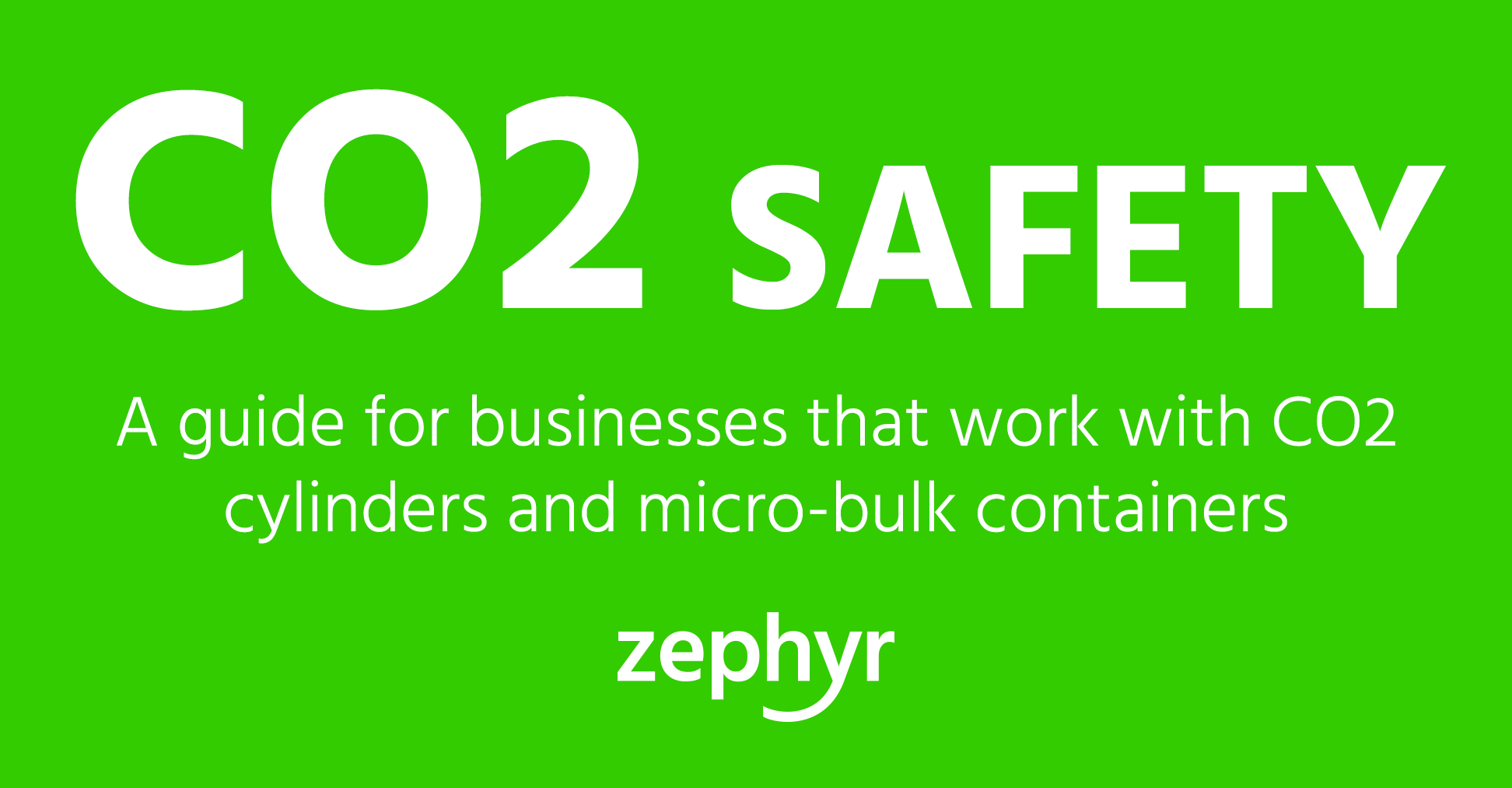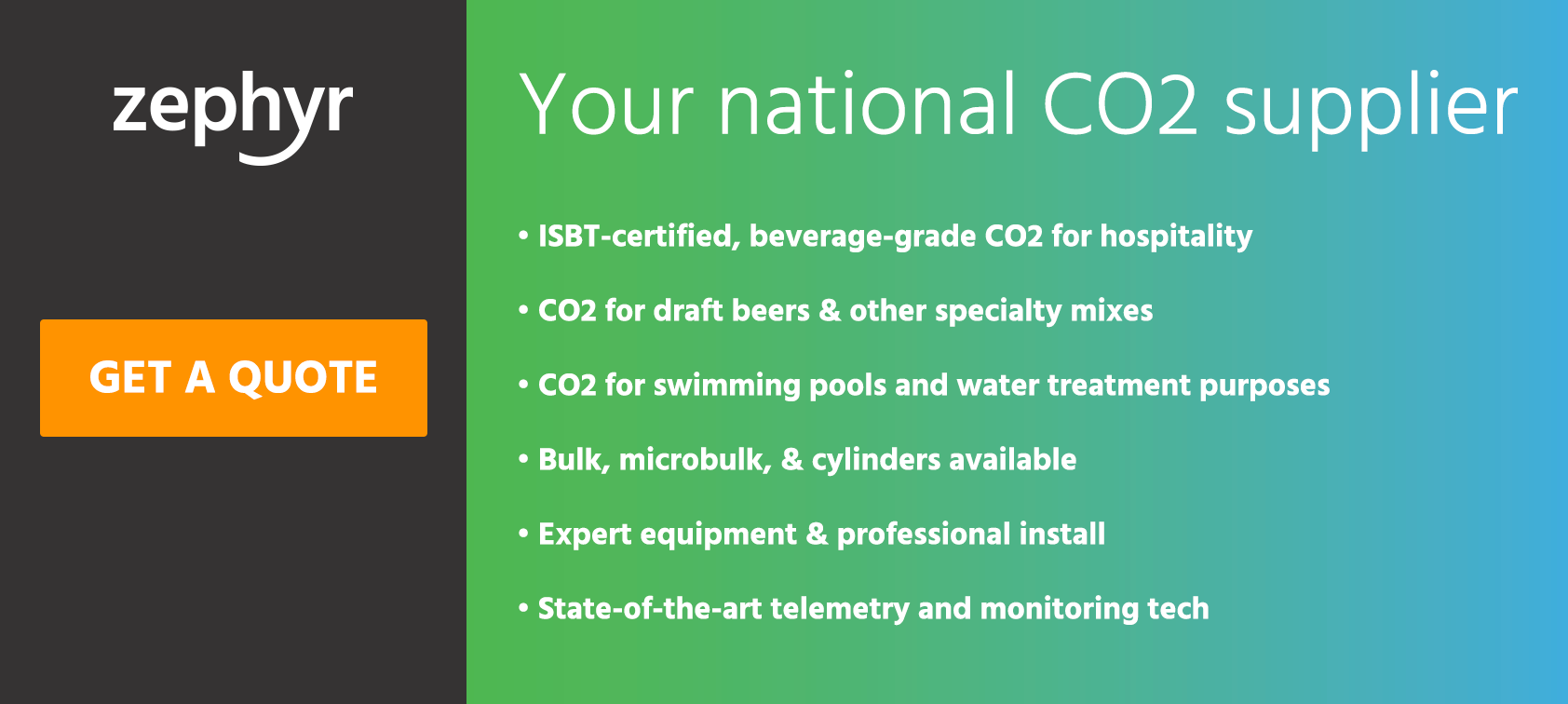CO2 safety is critically important, especially when it comes to your business and people. Consult this guide for the proper handling and storage.
That fun, bubbly gas that produces so many of the beverages that we love also comes with some not-so-fun consequences. Unfortunately, things do occasionally go wrong when the proper CO2 safety measures are not in place.
Let’s start with the potential hazards of CO2
CO2 gas is in the air all around us in very small amounts. Despite popular belief, the reason we breathe is not necessarily to take oxygen in, rather to dispel the CO2.
When CO2 increases in the air, like with a leak from a micro-bulk container, and accumulates in a confined enough space, it can cause suffocation and death.
CO2 is 1.5 times heavier than air, so any leaking gas will sink toward the bottom of the air column, accumulating around the floor or in trenches or sumps.
CO2 also poses risks to equipment. In rare instances, leaking CO2 can mix with moisture in the air. When this happens, a weak acid known as carbonic acid forms and this can actually eat away at carbon steel pipes.
So, how do we ensure proper CO2 safety practices within our businesses to avoid these potential hazards?
CO2 safety handling — micro-bulk and cylinders
Proper handling of containers is the first key to assured CO2 safety.
When moving cylinders, only transport them using a cylinder cart specifically designed to handle and move CO2 tanks.
Always use your CO2 cylinders upright.
Always dress appropriately when handling cylinders and micro-bulk containers and when connecting or disconnecting lines. Staff should always wear clothing that covers their skin. This means long-sleeved shirts and long pants. Leather safety gloves should cover the hands and wrists, and safety glasses to protect the eyes. A full face shield should be worn when connecting/disconnecting hoses to micro-bulk containers.
Prevent the escape of lingering CO2 gas by fully closing the valve on the cylinder or micro-bulk tank BEFORE disconnecting any hoses.
Zephyr provides food- and beverage-grade CO2 to corporations all around North America and is an expert in proper handling and storage. If you need further advice on your CO2 safety, please give us a call any time. If you are looking for a new CO2 provider, we’d be happy to give you a free CO2 quote too!
CO2 safety storage — micro-bulk and cylinders
Always store CO2 cylinders upright, and always safely away from any overhead items that could potentially fall onto the tanks.
Never place or store anything on top of your CO2 cylinders or micro-bulk containers.
Never store your CO2 tanks near flames or anything that emits high heat. Keep CO2 cylinders out of direct sunlight.
Never store your CO2 cylinders or micro-bulk tanks on or near anything electrical, or where they can become part of a current’s circuit.
Do not store your cylinders on or near anything in which they could potentially fall or be knocked over.
Always secure your CO2 cylinders and micro-bulk tanks properly with the appropriate and approved restraining device or methods mandated by local or state law. Contact your CO2 provider if you are not sure what the laws are in your region.
Always store CO2 in a well ventilated area.
To ensure proper CO2 safety measures, any enclosed areas in which CO2 is being stored should be equipped with a CO2 monitoring system.
CO2 safety — in case of emergency
Any individual exposed to direct or indirect contact with elevated levels of CO2 gas should immediately seek professional medical attention.
In the event that someone has been exposed to extremely concentrated levels of CO2 and remains in the affected, enclosed area, do not attempt to reach the person or enter the area. Instead, immediately contact emergency services and wait for further instruction after they respond to the area.
If the person can safely be reached and pulled out to a place with fresh air, do so. If necessary, someone certified in CPR may perform artificial respiration until help arrives. If you are not sure if it is safe to enter, simply contact emergency services and stay out of the area.
Never enter an enclosed area suspected of having increased levels of CO2 until your safety monitor confirms it is once again safe to enter.


